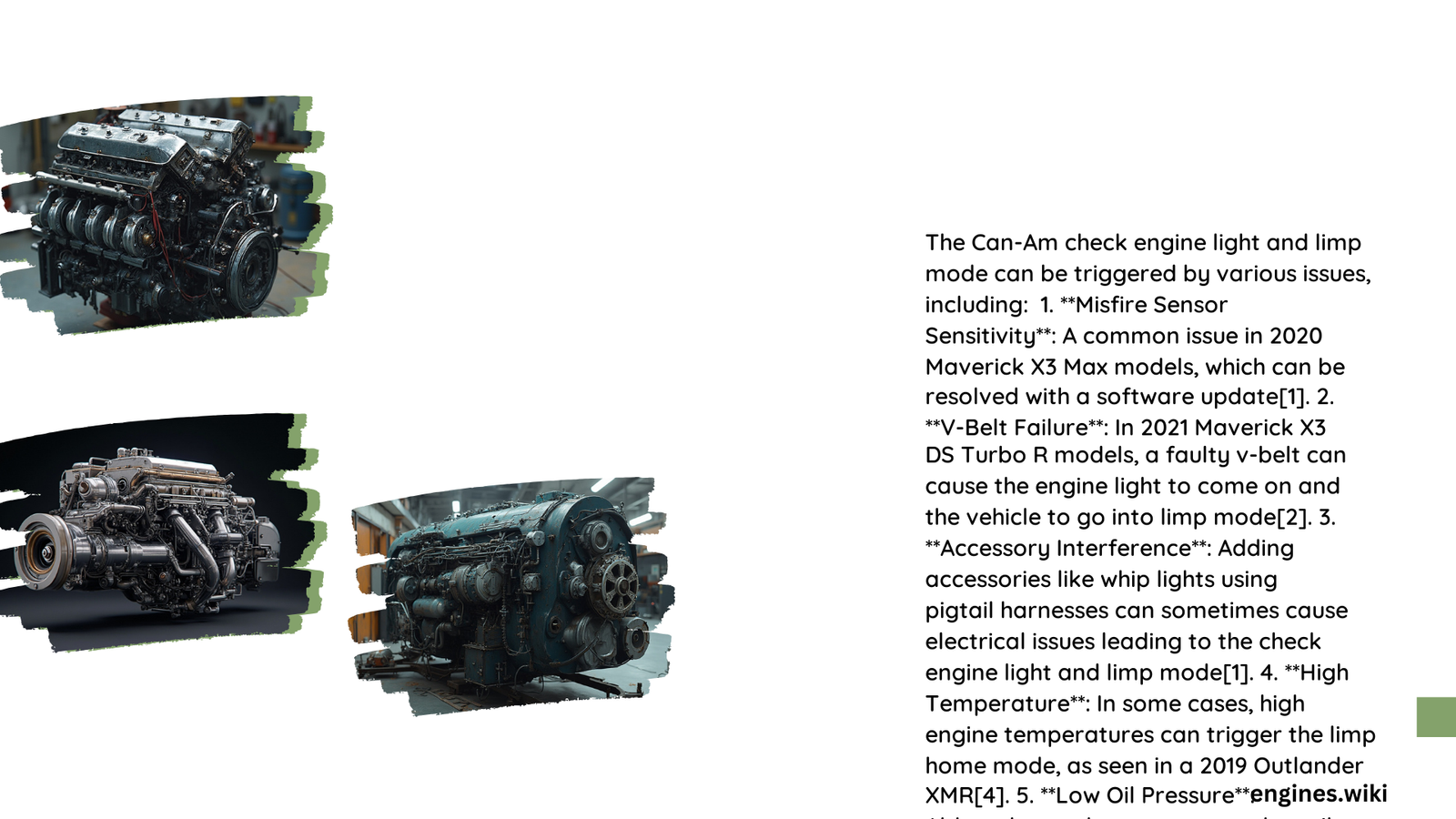When a Can-Am vehicle enters limp mode, it signals a critical system malfunction that requires immediate attention. This protective mechanism reduces engine performance to prevent potential catastrophic damage, triggered by various sensor, electrical, or mechanical failures. Owners experiencing a check engine light and restricted vehicle performance need a systematic approach to diagnose and resolve the underlying issues effectively.
What Triggers Can-Am Check Engine Light Limp Mode?
Battery and Electrical System Failures
| Symptom | Potential Cause | Diagnostic Action |
|---|---|---|
| Low voltage | Weak battery | Check battery charge and connections |
| Erratic electrical signals | Faulty wiring | Inspect wire harness for damage |
| Intermittent power | Corroded terminals | Clean and tighten battery connections |
Key Battery-Related Diagnostic Steps
- Voltage Testing
- Use a multimeter to check battery voltage
- Ensure voltage remains between 12.4-12.7 volts
-
Charge or replace battery if voltage is below threshold
-
Electrical System Inspection
- Check ground connections
- Examine wire harness for signs of wear
- Verify sensor connections are secure
Sensor and Mechanical Fault Detection
Common Sensor Issues Causing Limp Mode
- Throttle Position Sensor (TPS)
- Symptoms: Reduced acceleration
- Error codes: PPS FAULT
-
Potential fix: Sensor recalibration or replacement
-
Vehicle Speed Sensor (VSS)
- Symptoms: Inconsistent speed readings
- Error codes: UO416-C003A
- Potential fix: Sensor replacement or wiring repair
Diagnostic Troubleshooting Workflow
Step-by-Step Diagnostic Process
- Initial Assessment
- Connect OBD-II scanner
- Retrieve and document error codes
-
Note specific fault code descriptions
-
Visual Inspection
- Check for obvious mechanical damage
- Examine sensor connections
-
Look for signs of corrosion or wear
-
Component Testing
- Use multimeter for electrical component verification
- Test sensor resistance and voltage
- Compare readings with manufacturer specifications
Advanced Diagnostic Techniques
Specialized Diagnostic Tools
- Can-Am specific diagnostic software
- Professional-grade OBD-II scanners
- Manufacturer recommended testing equipment
Prevention and Maintenance Strategies
Proactive Maintenance Checklist
- Regular battery health checks
- Annual electrical system inspection
- Timely sensor and wiring maintenance
- Follow manufacturer recommended service intervals
Expert Recommendations

Addressing Can-Am check engine light and limp mode requires a methodical approach. While some issues can be resolved through basic troubleshooting, complex electrical or mechanical problems may necessitate professional diagnostic services.
Cost-Effective Solutions
- DIY diagnostic scanning: $50-$100
- Sensor replacement: $100-$300
- Professional diagnostic service: $150-$500
Warning Signs Requiring Immediate Attention
- Persistent check engine light
- Significant performance reduction
- Unusual engine behavior
- Repeated limp mode activation
Final Diagnostic Advice
Owners should never ignore persistent check engine light warnings. Immediate investigation can prevent costly repairs and potential vehicle damage.
Recommended Action Steps
- Retrieve error codes
- Perform initial diagnostic tests
- Consult professional mechanic if unable to resolve
- Document all diagnostic findings
Reference:
– Can-Am Official Diagnostic Guide
– Spyder Lovers Forum Diagnostic Discussions
– Professional Mechanic Diagnostic Resources
